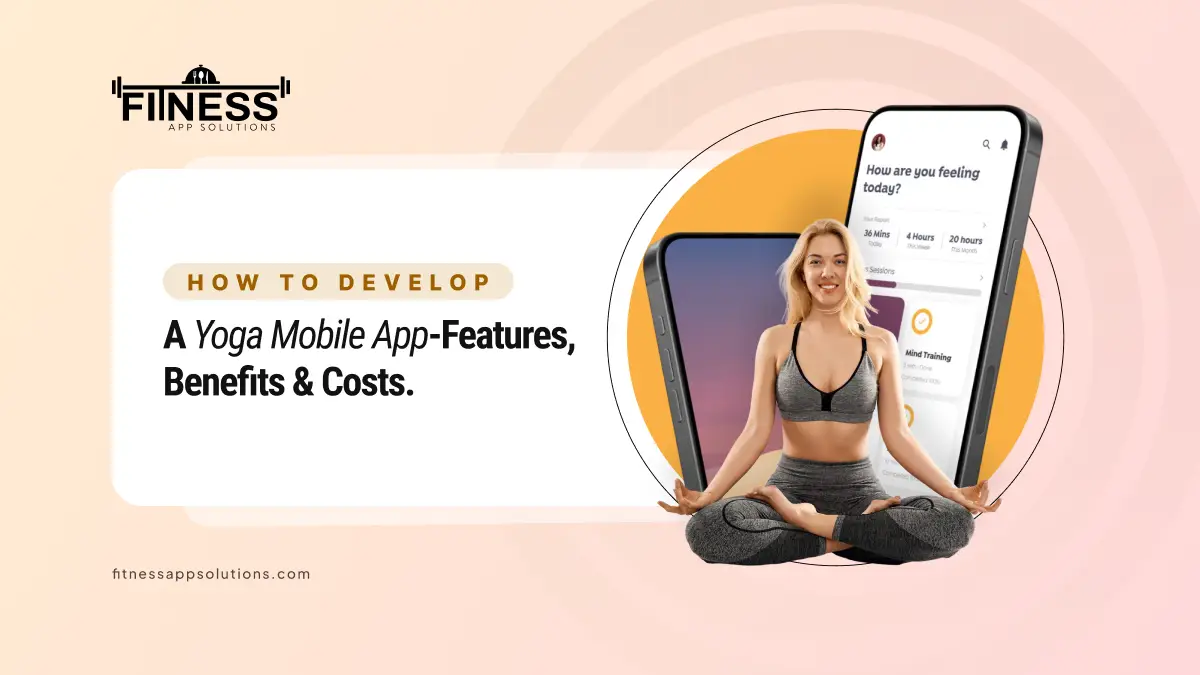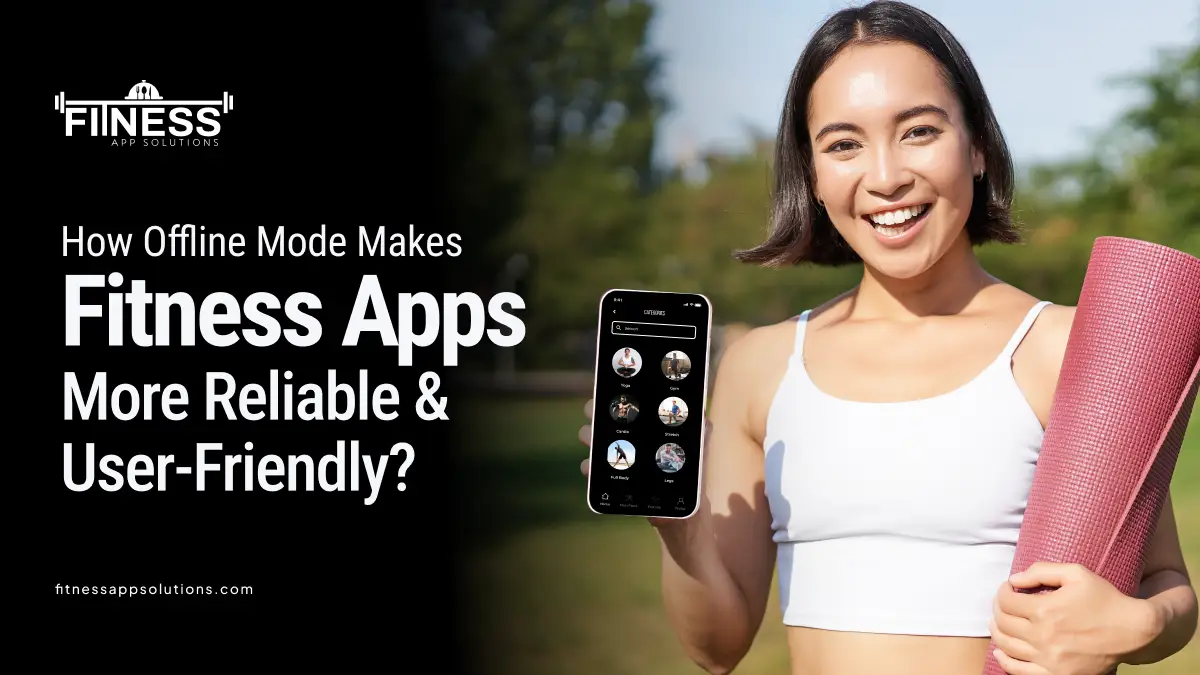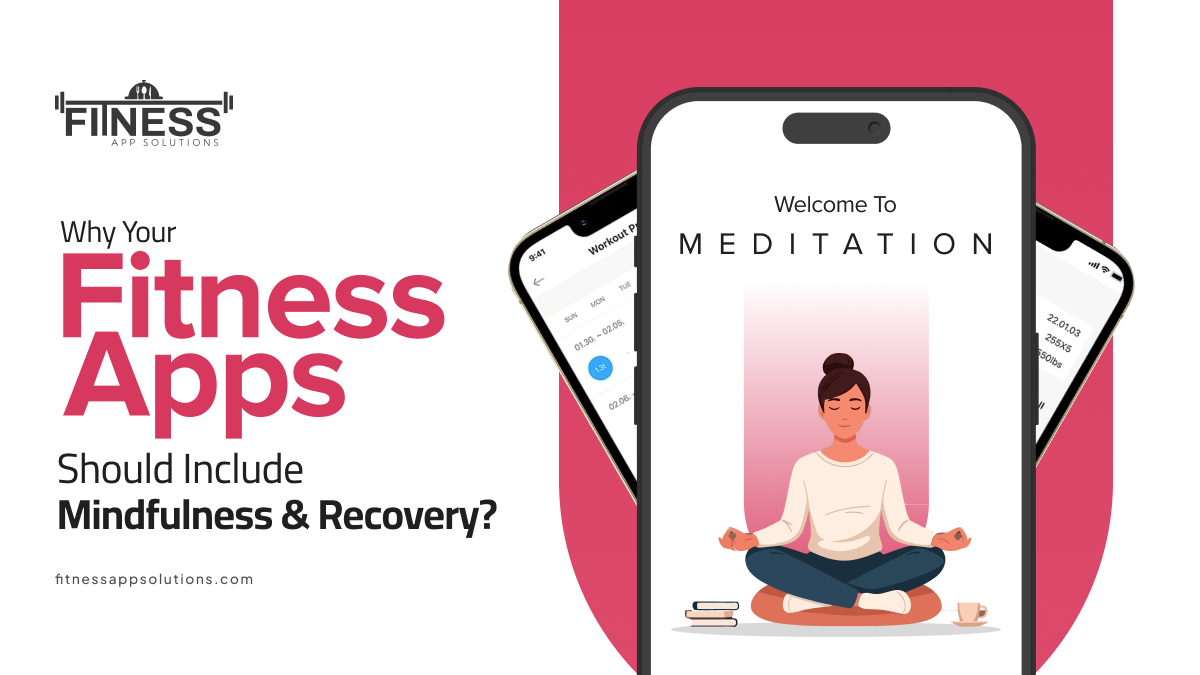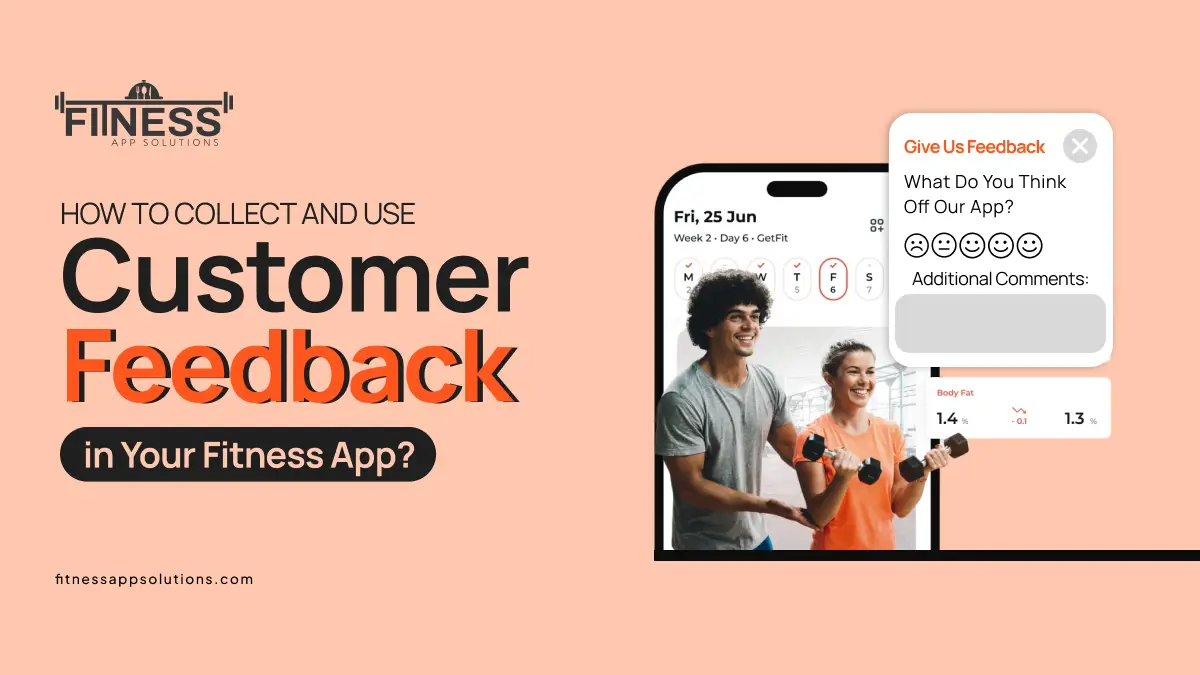Creating a yoga mobile app can be an exciting venture, especially for people who want to adopt technologies for their wellness purposes. In
this blog, we will understand how to develop a yoga mobile app, focusing on its must – have features, its benefits, and app development cost. This guide will thoroughly navigate you through the essential elements used to develop a yoga mobile app.
What are Yoga Mobile Apps?
Yoga has gained immense popularity over the years, which resulted in growing demand for yoga apps across the world.
As per IBIS world, The American yoga market is worth $ 147 billion, Whereas the market in the UK was worth $ 103 billion in 2023. However, the industry is worth $ 6783 billion in the Australian yoga market.
These apps allow users to practice yoga anywhere and anytime at their convenience. Whether you are a seasoned yogi (or a yoga practitioner) or a beginner, a well-designed yoga app can enhance your practices and help you achieve your goal.
Why Develop a Yoga Mobile App?

Before going into the app development process, it is essential to know why creating a yoga mobile app is a good idea. Here are some significant reasons:
Increasing Market
The health and wellness sector is flourishing, and yoga is a major contributor. By creating a yoga app, you can ride this increasing market and tap into a large pool of customers.
Convenience
Users enjoy the ease of doing yoga at home or while traveling. A mobile app provides them with access to classes and materials at any time.
Personalization
A yoga app has the potential to provide personalized experiences, including customized workout routines and progress monitoring, which makes it more attractive to users.
Community Building
Many yoga practitioners enjoy connecting with others. An app can facilitate community engagement through forums, challenges, and social sharing features.
If you’re wondering how to create a yoga app focusing on these core features will help you design a product that truly resonates with your target audience.
What are the Features Your Yoga Mobile App Must Have?

When developing a mobile app, certain features are essential to ensure a positive user experience. Here are the must-have features to consider:
1. User Interface
A simple and intuitive interface is essential for any mobile application. Users must be able to browse the application seamlessly, locate classes, and get access to resources without getting lost. Use basic icons and unambiguous labels to improve usability.
2. Class Library
An extensive library of yoga classes is an essential component. Such a library needs to contain different styles (e.g., Hatha, Vinyasa, Ashtanga) and levels (beginner, intermediate, advanced). Classes must be simple to filter by user preferences.
3. Video and Audio Content
High-quality video and audio content are needed to lead users through their yoga routines. Make sure that the videos are professionally produced, with a clear explanation and demonstration. Provide both live lessons and recorded sessions.
4. Progress Tracking
A progress tracking feature enables users to track their progress over time. This may involve monitoring the number of classes taken, flexibility improvements, or personal goals reached.
5. Personalized Recommendations
Providing personalized class suggestions through algorithms based on user interests and history can increase user engagement. This feature enables users to find new classes that suit their interests.
6. Community Features
Creating a community in the app can encourage user interaction. Consider including forums, chat rooms, or social media integration, enabling people to interact, exchange stories, and encourage one another.
7. In-App Purchases and Subscriptions
To monetize your app, consider offering in-app purchases or subscription models. Users can pay for premium content, exclusive classes, or personalized coaching. Ensure that the payment process is secure and straightforward.
8. Notifications and Reminders
Push notifications can help keep users engaged by reminding them of upcoming classes, new content, or challenges. This feature encourages users to return to the app regularly.
9. Wearable Device Integration
Integrating application with wearable devices (such as fitness watches) can provide a better user experience. Through this integration, users are able to monitor their heart rate, burned calories, and other statistics while they perform their yoga classes.
10. Support and Feedback
Having a means for users to provide feedback and support is crucial. This could be through a support page, FAQs, or by form. Hearing the feedback of the users can help improve the app in the long run.
What are the Benefits of Yoga App?
Creating a yoga mobile application has many advantages, not only for users but also for developers and companies. Some of the main benefits are:
1. Improved Accessibility
A yoga application provides yoga to more people. People can practice whenever and wherever they want.
2. Increased User Engagement
With features like progress tracking, personalized suggestions, and community interaction, users will be more likely to remain engaged with the app. This can result in increased retention rates.
3. Revenue Generation
A well-designed app can generate revenue through subscriptions, in-app purchases, and partnerships with yoga teachers or wellness brands.
4. Brand Building
Developing a yoga app can assist you in building your brand within the wellness sector. Having a strong app presence can result in more visibility and brand recognition.
5. Data Insights
By examining user data, you can gain valuable insights into user behavior and patterns. This data can be used to inform subsequent updates and enhancements to the app.
What is the Cost of Developing a Yoga Mobile App?
Factors affecting the mobile app development cost are:
1. App Complexity
The complexity of the application will have a direct effect on development costs. An easy app with simple features will be cheaper than a full-fledged app with high-level functionalities.
2. Platform Selection
Choosing to build for iOS, Android, or both will impact costs. Building two platforms generally takes more resources and time.
3. Design and User Experience
Spending on good design and user experience is critical to the success of an app. Custom designs and user testing may drive up costs but are well worth it for increased user engagement.
4. Development Team
The price of employing a development team will depend on where they are located and their level of expertise. Think about whether you will employ freelancers, an agency, or create an in-house team.
5. Maintenance and Updates
Regular maintenance and updates are required to keep the app running smoothly and to add new features. Budget for these expenses to guarantee long-term success.
The average cost of yoga mobile app development is:
| App (Level of Complexity) | Cost | Time for Development |
| Basic Yoga App | Minimum $ 25,000 to Maximum $ 50,000 | 3 to 5 Months |
| Medium Yoga App | Minimum $ 60,000 to Maximum $ 100,000 | 5 to 8 Months
|
| Advanced Yoga App | Minimum $ 120,000 to Maximum $ 200,000 | 8 to 12 Months
|
What are the Technology Stacks used in Yoga Mobile App Development?
Technologies used are:
| Components | Technologies Used |
| Programming Language | Swift (iOS), Kotlin (Android), Dart (Flutter), JavaScript (React Native) |
| Frameworks & SDKs | Flutter, React Native, Swift UI, Android Jetpack |
| Backend Development | Node.js, Django (Python), Ruby on Rails, Laravel (PHP) |
| Databases | PostgreSQL, MongoDB, Firebase Realtime Database, MySQL |
| Cloud Storage and Hosting | AWS (Amazon Web Services), Google Cloud, Microsoft Azure, Firebase hosting |
| AI and Machine Learning | TensorFlow, OpenAI, Google ML Kit, IBM Watson |
| Authentication & Security | OAuth, JWT (JSON Web Tokens), Firebase Authentication |
Conclusion
Building a yoga mobile application can be a profitable venture with several advantages for users and generating possibilities for businesses. By being clear on the required features, seeing the advantages, and planning on expenditure, you can build a successful app satisfying the requirements of yoga practitioners. As the health sector keeps growing, now is the ideal moment to start the project and bring about a good change in the lives of people using yoga.
Frequently Asked Questions (FAQs)
1.What is the first step in developing a yoga mobile app?
The first step in developing a yoga mobile app is research and analyzing market and competitor strategies.
2.What factors impact the cost of yoga app?
The cost can vary widely based on factors such as app complexity, platform choice (iOS, Android, or both), design quality, and the development team you choose.
3.How yoga app helps in brand promotion?
Developing a yoga app can assist you in building your brand within the wellness sector. Having a strong app presence can result in more visibility and brand recognition.
4.Can Yoga app help in weight loss?
Yes, with following the proper yoga plan and diet plan aligned with the yoga can help in weight loss.
5.How yoga app helps to lose weight?
Yoga app prepare a exercise plan according to user’s preference in order to help them in losing weight with suitable yoga asana.



